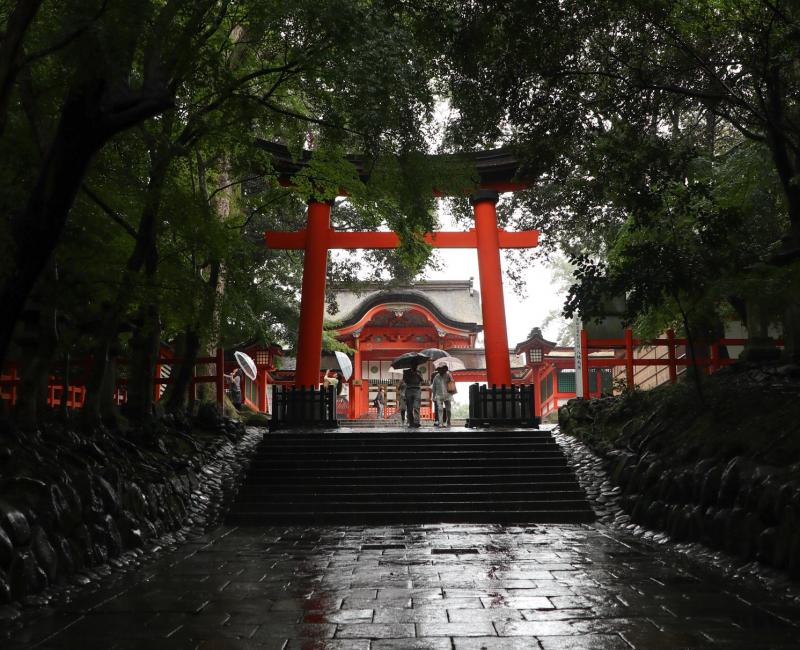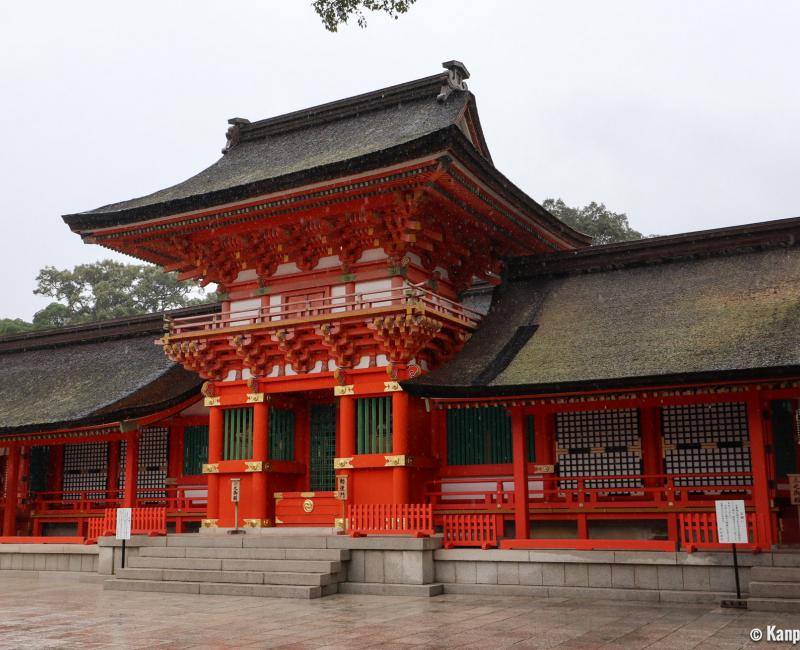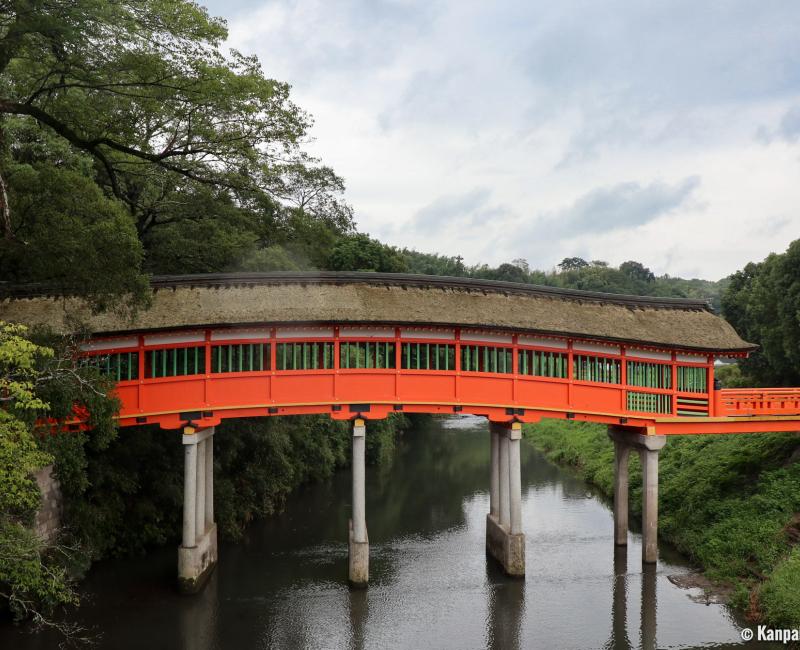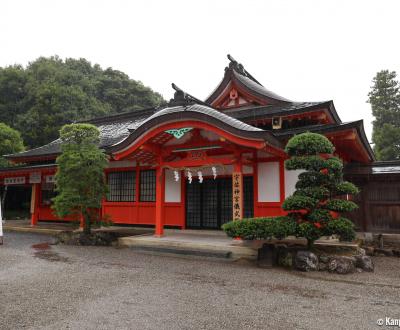Usa-jingu
The First Hachiman-gu Shrine
Usa-jingu is an old Shinto shrine in the eponymous city of Oita prefecture in the north-east of Kyushu. The first Sohonsha head shrine, it was built in the early days of Nara period (710 – 794) to honor Hachiman, the protector of the country. It is now leading more than 40,000 secondary shrines throughout Japan. Its influence over Kunisaki Peninsula is also of great importance.
The legend surrounding Usa-jingu is directly connected to the imperial patronage and its close relationship with Shinto, the indigenous religion of Japan. In 571, the divine spirit of Emperor Ojin appeared for the first time in Usa under the name of "Hachiman Okami." In 725, the first pavilion was built as its residence. In the following century, two other constructions were made, to house Jingu-Kogo, the emperor’s mother and princess Okami. The deities worshiped in Usa-jingu are thus considered the guardians of the Imperial Family. Therefore, in the Shinto hierarchy, Hachiman-gu shrines are second, always behind Ise-jingu, the most sacred one.

A shrine embodying syncretism
The influence of Usa-jingu also encompassed Buddhism as its grounds were also one of the first to let the two religions cohabit in the same place. As a sign of its power, Usa-jingu supported the building of Todai-ji’ s Great Buddha in Nara. A secondary shrine was even built next to it, named today Tamukeyama Hachiman-gu, where this story is told and the visit of Usa gods reenacted with mikoshi small portative shrines in a yearly festival (around October 5).

An important Shinto site in the heart of a sacred forest
The religious complex is vast, with an upper and a lower part, a treasure hall and several ponds. The visit starts by the traditional merchants street before the temple, with plenty of local products, and joins the main path omotesando, marked by the first great torii ⛩️ gate. The second great gate is after a lovely little vermilion bridge, from which one can see koi carps swimming, and is the official entrance to the shrine’s grounds.
In the vicinity, a modern building, the Treasure Hall, shelters a beautiful collection of katana swords, statues and fabrics dating back from a period encompassing the 9th century to the 17th century. The path continues towards the main buildings, constructed in the Hachiman-zukuri architectural style. Each of the three worshiped gods has two pavilions dedicated, placed side by side and connected by the roof. This layout, that was designed to allow the gods to move without being seen, adds to the secretive and mystical ambiance of the place, which is made heavier by the century-old forest surrounding it. Lastly, when going down toward the exit, the bright red and orange colors of Kurehashi covered bridge contrast with the green environment.

The visit of Usa Hachiman-gu shrine is pleasant thanks to its quietness and the spirituality it emanates. We recommend to go for hatsumode, the first visit to a place of worship of the year. Moreover, the lush vegetation surrounding the compound will remind, especially on a rainy ☔️ day, the magic forests of Studio Ghibli movies.

